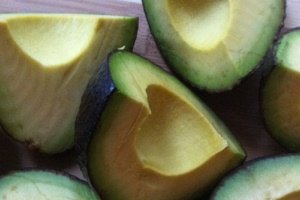Nutrition Veggies The Miracle Food
Continuing our series on healthy eating, this seems to be the perfect time to talk about fruits and vegetables and how critical they are to our health.
+ WHERE WE ARE TODAY:
The sad truth is that we (Americans) are just not eating enough vegetables! The proliferation of pre-packaged foods and heat-and-eat meals has just made it more convenient for us to add pounds, while robbing us of the health benefits of natural vegetables. According to the U.S. Department of Agriculture, the average adult American eats 4.4 servings of fruits and vegetables a day, which is an increase from 3.9 servings a day when the 5 A Day program began in 1991. Children eat 3.4 servings a day, which is an increase from 3.1 servings a day in 1991.
+ WHERE WE NEED TO BE, AND THE BENEFITS OF GETTING THERE:
The goal is for each of us to eat AT LEAST five servings of fruits and veggies every single day. Research has shown that eating 5 A Day reduces the risk of cancer, heart disease, and other illnesses. Cancer, heart disease and stroke are the three leading causes of death in this country. All three are diet-related due to diets high in fat and too low in fruits and vegetables. People who eat 5 A Day have half the risk of developing cancer as those who eat only 1-2 servings a day. In fact, more than one-third of the 500,000 cancer deaths each year could be prevented by eating a diet rich in fruits and vegetables.
Veggies are an excellent source of vitamins and fiber. Eating fruits and vegetables does more than reduce the risk of cancer: Research continues to find strong links between increased fruit and vegetable consumption and the decreased risk of chronic diseases such as cancer, heart disease, and stroke. Convincing evidence proves that fruit and vegetable consumption plays a positive role in the reduced incidence of cataracts, diverticulosis, high blood pressure, chronic obstructive pulmonary disease, asthma, bronchitis, and osteoporosis. Eating 5 or more servings of fruits and vegetables daily will reduce health risks substantially.
+ HOW TO EAT MORE FRUITS & VEGGIES:
Americans are 4 times more likely to pick a processed snack, than a fruit or vegetable. In addition, Americans are 10 times as likely to select a carbonated soft drink than 100 percent juice. So how do we get more fruits and veggies into our diets? One answer is to select fruits and vegetables for a snack full of vitamins, nutrients, and good taste. Lose those empty calories! Strategies to reach the goal of 5 or more servings of fruits and vegetables a day also include having fruits and vegetables at every meal.
Another way to make sure we get all the healthy fruits and veggies we need is to find new recipes that we might enjoy. A great website for finding healthy produce recipes is www.aboutproduce.com, where you'll find literally hundreds of delicious recipes!
Some helpful tips to get the health benefits of veggies:
1) Eat 5 or more servings of fruits and vegetables a day.
2) Eat at least one high-fiber selection a day.
3) Eat cruciferous (cabbage family) vegetables several times a week.
4) Enjoy the most colorful fruits and vegetables often.
5) Eat at least one dark green vegetable daily.
+ COOKING & EATING TIPS:
"As soon as a fruit or vegetable is harvested or sliced, a process called oxidation begins," says Holly Brewer, R.D., a dietitian at Sunrise Hospital and Medical Center in Las Vegas. "To fight the damage, the plant's cells use up their antioxidant stores, leaving less for you to eventually consume." The fix is to eat fresh produce within a day of purchase, or buy frozen instead. According to a University of Illinois study, fresh green beans retain only 36% of their vitamin C after six days, while frozen green beans keep 77%.
Steam your veggies (or eat them raw) instead of boiling them. When boiled, or microwaved in water, veggies release their nutrients into the cooking water. Steaming them will prevent much of this nutrient loss. Another alternative is to make soups, stews and other dishes in which the cooking liquid is consumed.
Always choose fresh, whole fruits and veggies over canned or frozen - EXCEPT do not "stock up" on fresh fruits and vegetables because they lose their nutrients so quickly.
When it's not possible or convenient to 'eat fresh', go with frozen instead of canned veggies.
Always choose whole fruits & veggies over processed or juiced. For example, a whole apple is much healthier than a glass of apple juice. Too many juices add sugar, and almost all juices eliminate the fiber.
+ FRUITS & VEGGIES ON A BUDGET:
Sad but true, it is often less expensive to eat junk food than it is to eat healthy. Follow these tips to save money on produce:
1) Buy fresh fruit in season, when prices can drop DRASTICALLY. For example, as the holidays draw near we'll see the price of oranges drop sharply (assuming the hurricanes in Florida didn't destroy the crop). In previous years, we've been able to buy an entire CASE of fresh oranges for about $10.
2) Stock up on frozen veggies when they're on sale. Thanksgiving is approaching, and many grocery stores will be selling frozen veggies as 'loss leaders', which means they sell them below cost just to get us in the door (hoping we'll also buy more profitable items). It's not uncommon to see 16 oz. bags of frozen veggies for 33 cents or even less during the week before Thanksgiving! Stock up and save!
3) Buy what's on sale. Every single supermarket in the country has some kind of produce on sale each week, so take advantage of the lower price! Take kiwi for example. While the regular price is often 2 for $1, a typical sale will bring the price down to 4 for $1.
4) Buy in bulk. Even though we don't want to 'stock up' on fresh veggies, how about buying more and splitting it with a friend or family member? For example, a 10 lb. bag of onions is much less expensive per pound than buying single onions.
5) Grow your own fruits and veggies! Gardening is fun, profitable, healthy and also great exercise! Remember that produce begins to lose nutrients the minute it is cut from the plant, so gardening gives us the healthiest foods available - the picked-to-table time is MUCH MUCH lower than what we'll find at the store!
6) Shop the local growers or processors. We've all seen those road-side stands where the local farmers sell their goods out of the back of their truck.....why not take advantage of that? Often, it's a fresher, healthier product for a much lower price than what we'd normally pay in the grocery store.
+ THE FINAL 'BITE':
Hopefully we've all learned something about fruits and vegetables, and how eating more of them can benefit our health. This is one of those rare times when it's okay to eat more!
So get going to the garden or the produce section of the supermarket....we'll see you there!
Source: Fitness Magazine, November 2004 issue Source: www.aboutproduce.com
* Copyright 2005 Pick Up The Pace. Permission is not required for the distribution of Pick Up The Pace articles as long as they are used in their entirety, are properly credited to Pick Up The Pace, and are accompanied by our website link: www.letspickupthepace.com.
* The information in this article and on this site is for general reference purposes only and not intended to address specific medical conditions. This information is not a substitute for professional medical advice or a medical exam. Prior to participating in any exercise program or activity, you should seek the advice of your physician or other qualified health professional. No information in this article or on www.letspickupthepace.com should be used to diagnose, treat, cure or prevent any medical condition.
-
The Most Effective Weight Loss Method
There are the South Beach Diet, Atkins D
-
The Truth About Losing Weight On A Vegetarian Diet
?It does not matter what you eat. Just dont eat a lot, exercise, and y
-
The Jiggle Effect On Faster Weight Loss
Exercise Physiologists who study the effects of exercise on weight los
-
5 Weight Loss Methods You Need To Avoid
Weight loss in the UK has always been one of the most debated subject
-
Shed Those Extra Pounds with Soups
One of the most effective ways to drop all those extra pounds is to
-
Do I Look Fat The Top Five Reasons To Say No
The question is asked by your wife or girl friend every time you get r
- DON'T MISS
- The Importance Of Weight Loss Program
- Get Fast Muscle Gain
- Putting Fitness First
- 7 Signs Your Gut Needs Healing + How to Do It: A Doctor Explains
- Using The Vegetable Diet To Lose Weight
- 5 Natural Tips For Weight Reduction
- Getting Fit: Tips And Tricks For Losing Weight
- Obesity and metabolic syndrome result in low vitamin E
- Hcg For Weight Loss
- Chinese Herbs for Weight Loss




